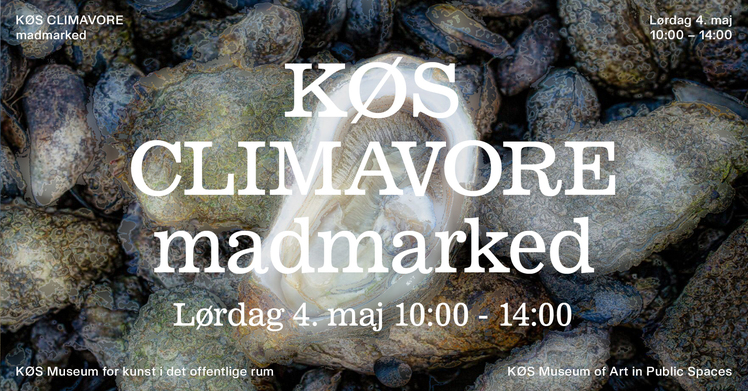KØS CLIMAVORE farmers market

KØS repeats last year’s success and invites you to the KØS CLIMAVORE food market on the museum’s forecourt on Saturday May 4th from 10am to 2pm.
The day offers a packed CLIMAVORE programme with talks and food stalls. You can, among other things, take part in a guided oyster meditation with HAVHØST or be creative in KØS’ workshop for families, where kids and adults can taste some of the sea’s delicacies and make beautiful seaweed and mussel prints to take home.
At the market you can meet KØS’ own CLIMAVORE Café, Annas Fiskekasser, FANGST, Køge Fælles Jord, Mirjas Bakery, Nørbys Grøntsager and Skyttegården’s Østershatte.
PROGRAM
10.00-14.00: The market stands are open on the forecourt.
10.00-14.00: Open workshop for children: Taste some of the delicacies of the sea and let yourself be inspired for beautiful seaweed and seashell prints.
11.15-11.30: Welcome and intro to KØS BECOMING CLIMAVORE.
11.30-12.00: Conversation about the future of blue foods:
Bodil Sofie Espersen, Havhøst, Anna Borg from Annas Fiskekasser and Alexander Holm biologist and podcast host at Den Dyriske Time.
12.30-12.50: Oyster meditation at Havhøst.
13.00-13.45: Conversation on regenerative sea farming and citizen involvement along the coasts: Karl Michael Sloth, Den Levende Fiskerihavn, Stevns, Allan Scheller, Køge Bugt Stenrev, Nicolaj Lindeborgh, Dyrenes Beskyttelse, and Alexander Holm, biologist and podcast host at Den Dyriske Time.
KØS CLIMAVORE food market is part of KØS Becoming CLIMAVORE
KØS is part of the international food and art project Becoming CLIMAVORE and has rearranged the menu in KØS Café so that today it follows the seasons and is based on local and regenerative ingredients. As a natural development of the project, KØS is now building a bridge between producers and consumers, so that we know where the food we eat comes from and who made it grow or caught it, and under what conditions.